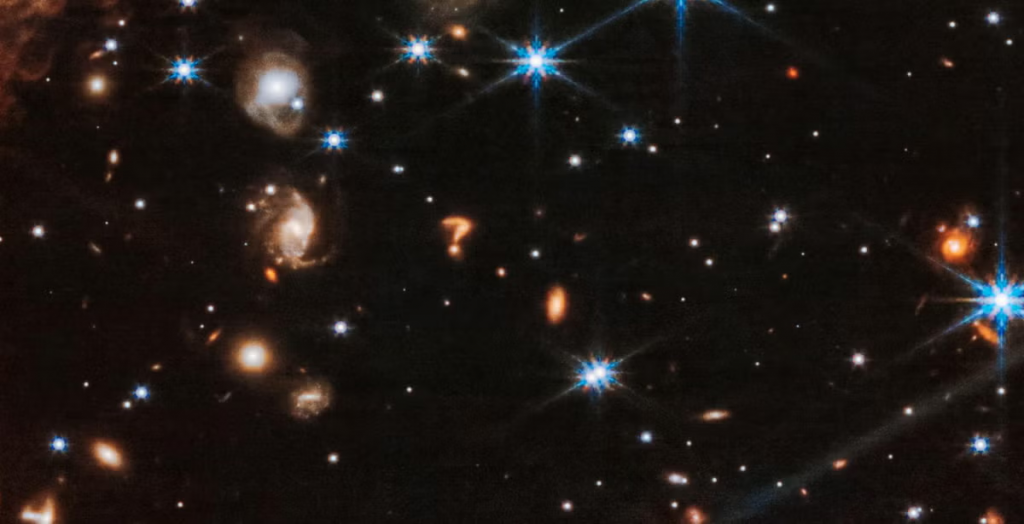NASA’s James Webb Space Telescope has once again astounded astronomers with its latest discovery – a remarkably detailed image of a star system located 1,470 light years away.
The Herbig-Haro 46/47 star system, captured by the powerful infrared cameras of the Webb telescope, stands out for its relative youth – being only a few thousand years old. This rarity makes it a crucial object of study, providing valuable insights into the process of star formation. The tightly bound pair of young stars displays two-sided orange lobes resulting from earlier ejections from their cores.
Astronomers are particularly intrigued by the prospects of understanding the evolution of this star pair. By observing how these stars gather mass over millions of years, researchers can gain valuable data to model the formation of low-mass stars, such as our own Sun.

While the stars are undoubtedly captivating, the image holds another intriguing element – a peculiar cosmic feature in the backdrop resembling a question mark. Scientists speculate that this distant entity could be a galaxy or a fascinating interplay of two interacting galaxies. The red color of this question mark-shaped object suggests that it resides far beyond our Milky Way galaxy, possibly making it the first sighting of such an entity.
Despite the excitement surrounding the discovery, further follow-up observations will be required to definitively identify and understand this mysterious object. The Webb telescope continues to open new horizons for astronomical research, revealing distant galaxies and prompting astronomers to delve deeper into the cosmos.

In the words of the US’s Space Telescope Science Institute, which manages Webb’s science operations, “Webb is showing us many new, distant galaxies – so there’s a lot of new science to be done!”
As the telescope continues to explore the universe, we can expect even more captivating revelations and cosmic wonders to come to light.


